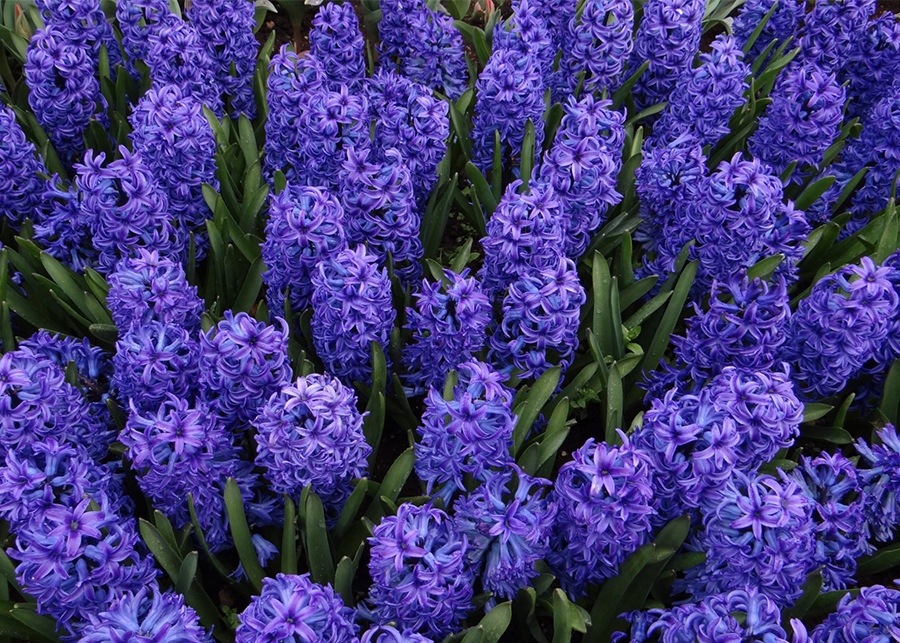You may not have heard of the hyacinth yet, but it’s a flower that has been popular for centuries. The hyacinth is part of the genus Hyacinthus, and it is related to and sometimes confused with the bluebell. These flowers come in different colors and fragrances. Each one is unique, and you’ll be able to use them to stray from the ordinary and create stunning arrangements. Whether you’re looking for a unique flower to add to your collection, or if you’re interested in growing them at home, the hyacinth should definitely be on your list!
The hyacinth is a beautiful Mediterranean flower that has been popular for centuries. These flowers come in a variety of colors, and they can be used to create stunning arrangements. If you’re looking for a unique flower to add to your collection, this flower is definitely worth considering. Thanks for reading!
What Is a Hyacinth?
Hyacinthus is a little genus of bulbous, spring-blooming perennials in the Asparagaceae family, subfamily Scilloideae. They are fragrant blooming plants in the Asparagaceae family, subfamily Scilloideae and are often known as hyacinths. The species is native to the Eastern Mediterranean region, ranging from Turkey through northern Israel.
Many of the same plants that were formerly considered part of the lily family and have flower clusters borne along the stalk are also known by names containing “hyacinth.” They should not be confused with Muscari, a genus of grape hyacinths.
They are blooming annual bulbs with approximately 20 species, all of which belong to this genus. The genus name was given to Joseph Pitton de Tournefort when used by Linnaeus in 1753. The name is derived from a Greek word used by Homer for a plant, hyákinthos, because the blossoms supposedly sprouted from the blood of a youth named Hyakinthos who was inadvertently killed by Zephyr.
It is a bulb-forming perennial plant with numerous narrow, linear leaves and one to three spikes or racemes of blooms. In the wild, H. litwinovii’s flowers are widely spaced and are present on only one raceme per species, while those of H. orientalis grow to a height of 15–20cm (6–8in) and have 6-8 flowers per raceme. H. orientalis cultivars have sturdier flower spikes and are generally more robust.

Hyacinth Flower Meaning
The hyacinth is a beautiful flower with a rich history and complex symbolism. Its meaning can vary depending on the flower’s color, but generally hyacinths represent rebirth, new beginnings, and rebirth.
Here’s a breakdown of hyacinth flower meanings by color:
- Blue Hyacinth: Sincerity and constancy.
- Purple Hyacinth: Deep regret, apology, and sorrow.
- White Hyacinth: Purity, innocence, and new beginnings.
- Pink Hyacinth: Playfulness and joy.
- Yellow Hyacinth: Jealousy and envy.
Usage and Cultivation of Hyacinths:
The Dutch, or popular house and garden hyacinth (H. orientalis, native to southwest Asia) was extremely popular in the 18th century that over 2,000 cultivars were cultivated in the Netherlands, its major commercial producer. The fragrant blooms of this flower are a single dense spike of colorful flowers ranging from red, blue, white, orange, pink, violet or yellow. The Roman hyacinth is a type of common floer that is less hardy and has smaller blue-or white-petaled flowers than the normal variety. These flowers thrive in indirect light and should be watered only when the soil has dried out somewhat.
The bulbs of the flower are poisonous and contain oxalic acid. The bulbs might irritate the skin if handled incorrectly. Gloves that protect against chemical burns should be worn.
Some of the plant subfamily Scilloideae species are often known as a part of this genus, but they are not in the genus Hyacinthus and may be eaten; for example, the tassel hyacinth is a component of Mediterranean cuisine.
They are associated with spring and regeneration. The flower’s bloom is incorporated into the Haft-Seen table setting for the Persian New Year, Nowruz, which takes place at the Spring Equinox. The Persian term for this flower is sonbol.
Hyacinth: A Beautiful Mediterranean, Result
Not only does the Dutch hyacinth add beauty to your garden, it also benefits for both households and the community overall. Discover here why you should definitely grow a Dutch or “popular” house garden hyacinth.
